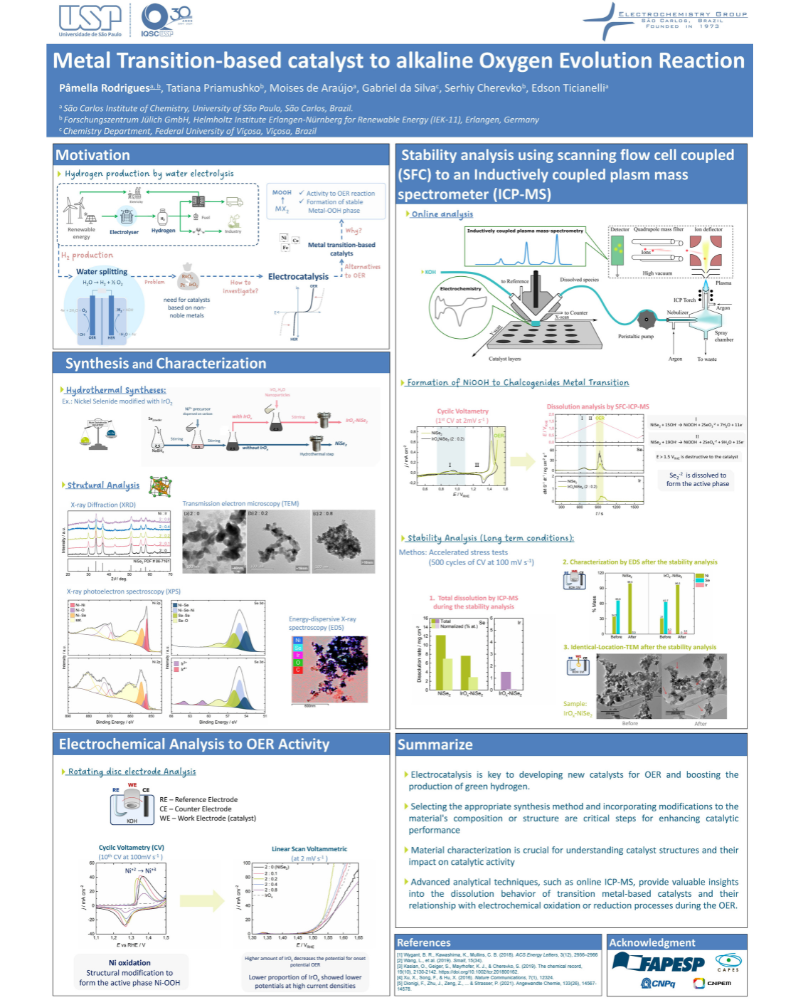
Water electrolysis is a promising method for producing green hydrogen, an important clean energy for achieving global decarbonization goals. This process involves two half-reactions: the hydrogen evolution reaction (HER) at the cathode and the oxygen evolution reaction (OER) at the anode. While the HER is relatively fast, the OER has a multi-step process involving the transfer of four electrons, significantly limiting the overall efficiency due to its slow kinetics [1]. In this context, developing efficient catalysts for OER is crucial to the viability of clean energy technologies that align with green chemistry principles. Catalysts based on transition metals derived from nickel, cobalt, and iron are particularly promising for OER in alkaline environments due to their ability to form stable oxides or hydroxide phases [2]. Advances in material design, such as the synthesis of transition metal chalcogenides, the incorporation of dopants, or the introduction of structural defects, have significantly improved the catalytic performance of these materials [3]. One of the investigations carried out in this research field is the study of nickel selenides modified with iridium oxide nanoparticles for OER. In this study, the catalysts were synthesized using hydrothermal methods and characterized by different techniques, such as x-ray diffraction (XRD), electron diffraction spectroscopy (EDS), and x-ray photoelectron spectroscopy (XPS). The characterization was essential to confirm the formation of the NiSe2 phase containing amorphous IrOx nanoparticles (IrOx-NiSe2), and to obtain the chemical composition of the catalyst. Electrochemical techniques such as cyclic voltammetry (CV) indicate that the modified catalysts have more catalytic activity than nickel selenides pristine. In addition, the electrochemical analysis combined with online measurements by inductively coupled plasma mass spectrometry (ICP-MS)[4] allowed us to suggest reaction mechanisms for the formation of the active nickel oxyhydroxide phase (NiOOH), which is responsible for catalyzing the OER reaction. Our studies reinforce the importance of controlling the chemical composition and structure in obtaining durable and efficient electrocatalysts for OER, directly contributing to the development of sustainable solutions for green hydrogen production.